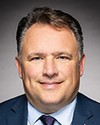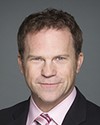Speaking from the EMS side of things, being the emergency service with the least amount of tradition of the three that are sitting before you today, EMS is relatively.... We used to be referred to as the baby of the three emergency services. I like to think we've grown up a little. We'll call us a teenager now. We are the teenager of the three services. Truly, we've only had a professional existence of about 50 to 60 years. We do not have a national memorial. We do not have a national recognition format for the death of any paramedic or emergency medical technician in this country. It is something we have been fighting to get for over the last decade, and it is worse than a snail's pace at progress.
Personally, I have organized, put together, and run a funeral event for a line-of-duty death that happened in Guelph, Ontario, for a paramedic. It was a very challenging process, but I relied upon my colleagues in our national alliance. We have a nationally developed funeral planning kit. We have a national document that is dedicated to EMS honour guards but is very easily manipulated to include any emergency service. The bones or framework are similar and the protocols are similar. It's simply the nuances of emergency services, policing, firefighting, and so on. The bone structure is there. It's there to develop upon.
As my colleague, Mr. Kellock, said, to codify a specific protocol...I believe it does have to be the bone work as we discuss it. And yes, nuances for policing, nuances for firefighting, and nuances for emergency medical services do have to be included. That is something that you work out with the individual unit that has experienced the loss. But a framework can be very easily manipulated and very easily put together. The three representations here at this table do have the resources. By compiling them all together, working together as a group, we can come up with a structured document that we can distribute on a national basis that anybody can benefit from.



